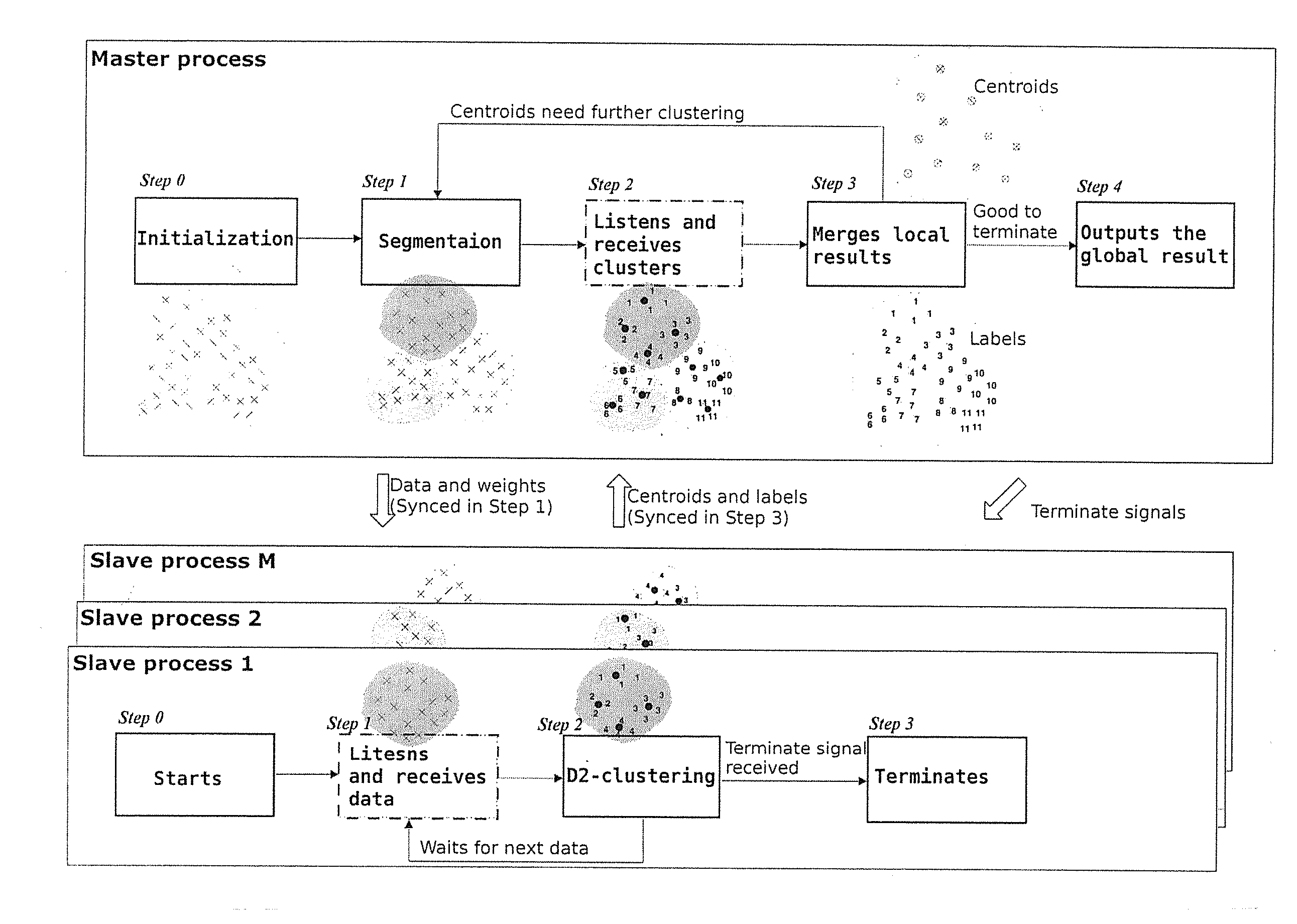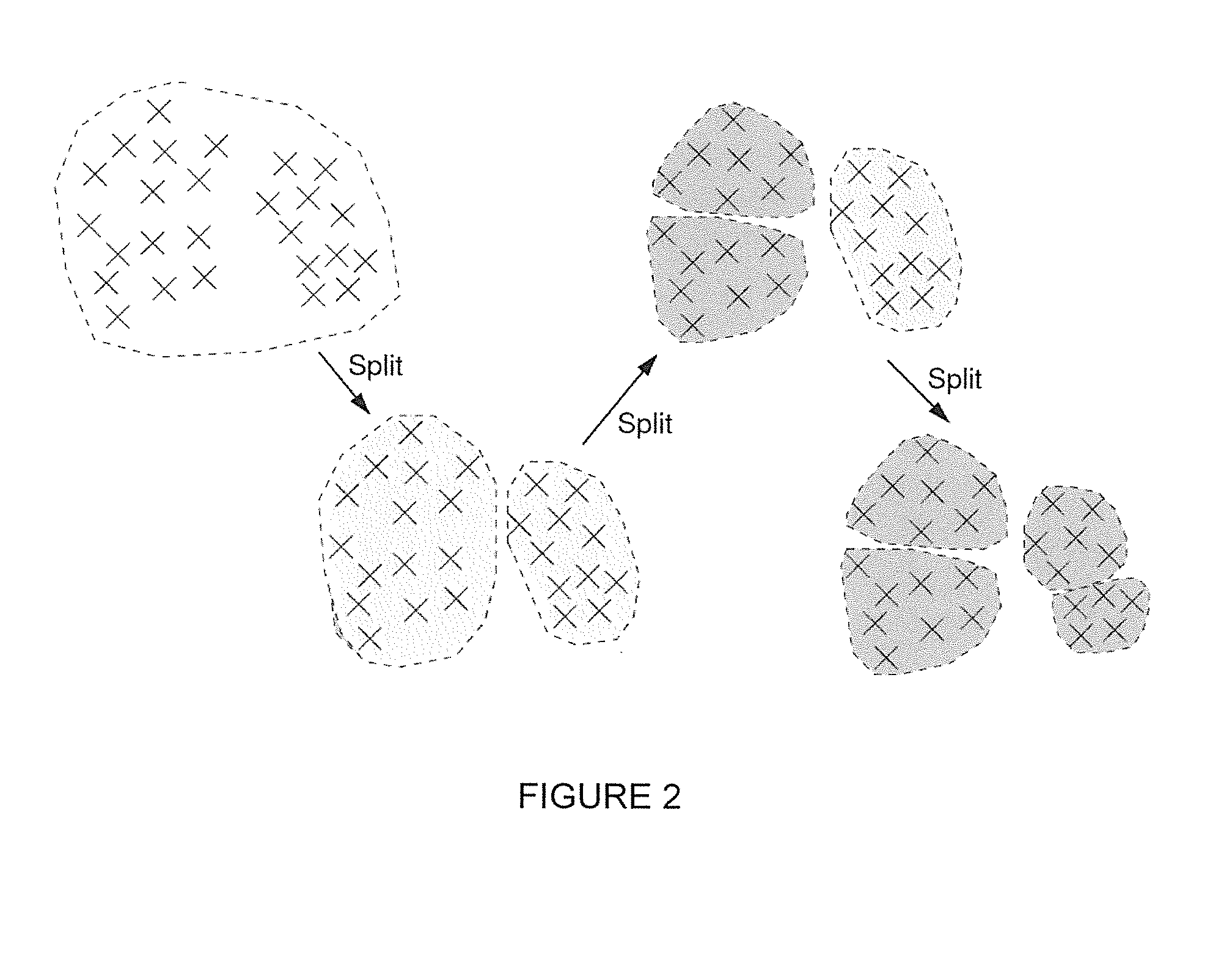Massive clustering of discrete distributions
a discrete distribution and mass clustering technology, applied in relational databases, database models, instruments, etc., can solve the problems of limiting its use and unsatisfactory solutions, and achieve the effect of efficiently performing data segmentation
- Summary
- Abstract
- Description
- Claims
- Application Information
AI Technical Summary
Benefits of technology
Problems solved by technology
Method used
Image
Examples
Embodiment Construction
[0043]Table I compares D2-clustering with several basic clustering algorithms in machine learning. D2-clustering runs on discrete distributions which K-means cannot handle. It is also more preferable over agglomerative clustering (Johnson, 1967) and spectral clustering (Ng et al., 2002) when cluster prototypes are needed. The main disadvantage of D2-clustering is the high time complexity. The parallel D2-clustering algorithm listed on the last column of the table keeps most of D2-clustering's properties with minor approximation, and improves the time complexity to a much lower order.
TABLE IComparison of Basic Clustering ApproachesK-meansAgglomerativeSpectralParallelMethodClusteringClusteringClusteringD2-ClusteringD2-ClusteringData typeVectorsAny typeAny typeDiscreteDiscretedistributionsdistributionsProvideYesNoNoYesYesprototypesBased onNoYesYesNoNopair-wisedistancesGlobalYesNoNoYesYes, withOptimizationapproximationTimeLinearQuadraticCubicPolynomialLinearithmicComplexity
Notations
[004...
PUM
 Login to View More
Login to View More Abstract
Description
Claims
Application Information
 Login to View More
Login to View More - R&D
- Intellectual Property
- Life Sciences
- Materials
- Tech Scout
- Unparalleled Data Quality
- Higher Quality Content
- 60% Fewer Hallucinations
Browse by: Latest US Patents, China's latest patents, Technical Efficacy Thesaurus, Application Domain, Technology Topic, Popular Technical Reports.
© 2025 PatSnap. All rights reserved.Legal|Privacy policy|Modern Slavery Act Transparency Statement|Sitemap|About US| Contact US: help@patsnap.com



